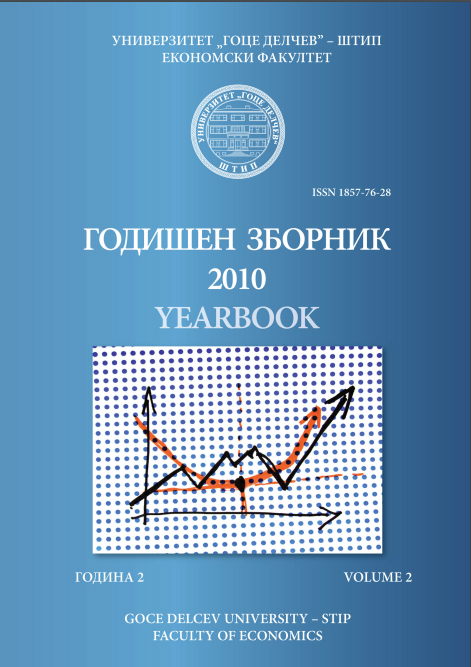Анализирање на зависноста помеѓу бруто- домашниот производ и трговијата на мало во Република Македонија во период од 1990 до 2009 година со примена на економетриски модели
Abstract
Gross Domestic Product - GDP is the the widest measure of economic activity. Annual quarterly percent changes in GDP refl ect the growth rate of overall economic results.The fi gures can be quite volatile from quarter to quarter. Inventory and net export swings in particular can produce signifi cant volatility in GDP. The fi nal sales fi gure, which eliminate inventories, can sometimes be useful in identifying underlying growth trends as inventories represent unsold goods, and a large inventory increase will boost GDP but might be indicative of weakness rather than strength. The monetary value of all services and fi nal goods produced within a country’s borders in a particular time period, though GDP is usually calculated on an annual basis. It includes all of private and public consumption, government outlays, investments and exports less imports that occur within a defi ned territory. GDP is totally comprehensive and detailed report. Actually, reading the report brings us back to many of the indicators. GDP includes many of them: retail sales, personal consumption and wholesale inventories are all used to help calculate the gross domestic product.Downloads
Download data is not yet available.
Downloads
Published
2013-05-21
Issue
Section
Articles
How to Cite
Анализирање на зависноста помеѓу бруто- домашниот производ и трговијата на мало во Република Македонија во период од 1990 до 2009 година со примена на економетриски модели. (2013). Yearbook - Faculty of Economics, 2(1), pp.51-62. https://js.ugd.edu.mk/index.php/YFE/article/view/506

